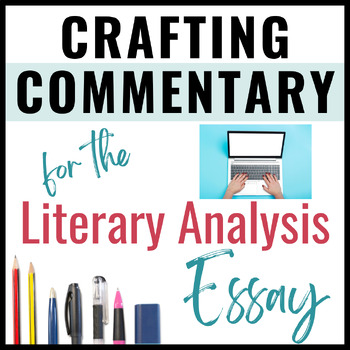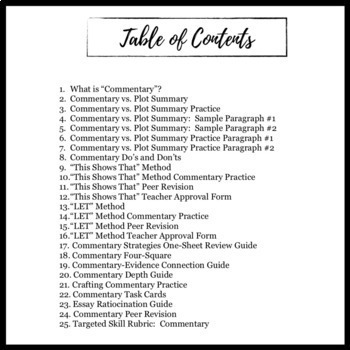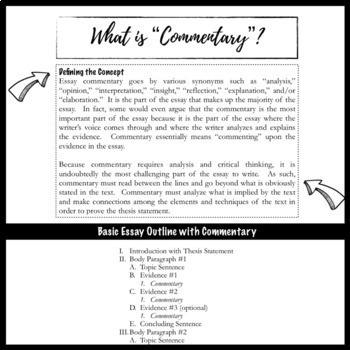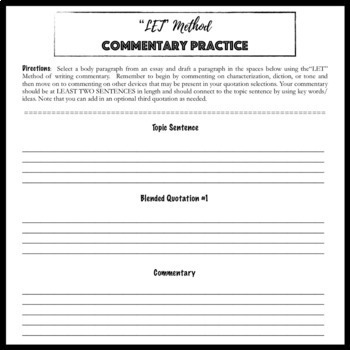Writing Commentary for the Literary Analysis Essay: Strategies for Success
- PDF
What educators are saying
Description
In this 38-page bundle, I have provided students with two methods for crafting commentary that will help them not only write analysis but also take it to a deeper level: the "This Shows That Method" and the "LET" Method.
Writing commentary is without a doubt the most difficult aspect of the literary analysis essay. It is the ONE part for which there is no formula because it's the part of the essay that contains the writer's original thoughts, or commentary/ analysis, on the evidence of the essay.
This bundle also contains:
--Commentary vs. Plot Summary Practice
--Commentary Do's and Don'ts
--Teacher Approval Forms
--Commentary Four-Square Activity
--Commentary-Evidence Connection Guide
--Commentary Depth Guide
--Crafting Commentary Practice
--Essay Ratiocination Guide
--Commentary Task Cards
--Targeted Skill Rubric: Commentary
This is an essential bundle for the writing process because the commentary is the MOST IMPORTANT part of the literary analysis essay.
Check out the blog at BespokeClassroom.com for more ideas and FREEBIES!
PERKS FOR YOU
*Join the Bespoke ELA Blog to gain access to 100+ FREE resources that are not here on TpT!
* Be sure to click the "FOLLOW" button that is located next to my picture in the profile so that you can hear about sales, new products, and freebies!
* Don't forget to leave feedback to EARN POINTS that turn into cash towards future purchases!
----------------------------------------------------------------------------------------------
Related Blog Posts:
Acronyms for Literary Analysis: A Comprehensive List of Strategies
Characterization Activities for ANY TEXT!
Teaching Students How to Write Commentary for the Literary Analysis Essay
Commentary for Literary Analysis: Four Square Strategy for Success
The Essay Shaping Sheet: Friend or Foe?
8 Ways to Help Students Break Through Writer’s Block
You might also like:
30 MENTOR SENTENCES with Writing Revision for GOOGLE SLIDES
Comment Cards for Academic Essay Writing: Helping Students Give Quality Comments
Commentary vs. Paraphrasing: A Mini-lesson for Literary Analysis
Follow Bespoke ELA for UPDATES, ANNOUNCEMENTS, & FREEBIES





